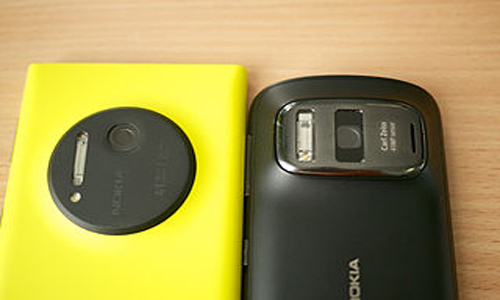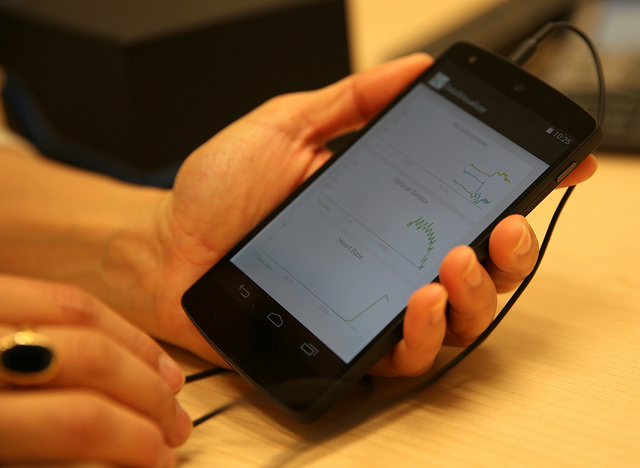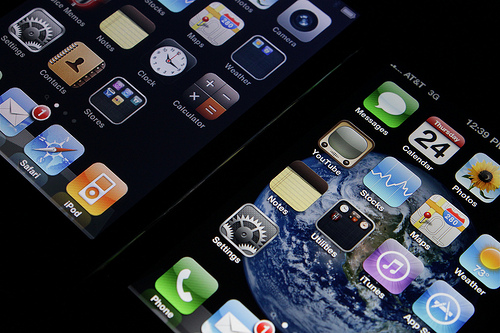High Resolution Smartphone Displays and Cameras: A Case of Misled Upgrading
So how sharp is sharp enough when it comes to smartphone display? After producing smartphones with screens carrying the same number of pixels as those of HD TVs, smartphone manufacturers proceeded to cramming the 2,073,600 pixels of a full HD resolution (1920×1080) to come up with sharper displays bragging pixel densities of up to 468 ppi. On the other hand, the cameras of mobile phones have also been given the megapixel-bumping treatment. From the brag-worthy 5MP cameras of yesteryears, smartphones today already come with camera sensors capable of snapping photos with resolutions as high as 41MP.
But are all of these making sense? Is it necessary to have super sharp smartphone displays? Are we really getting any real benefit from cameras with higher megapixel counts? All these questions deserve answers to help enlighten consumers and realize if they really need to “upgrade” to new smartphone models simply because they come with much sharper displays or cameras that can produce very huge pictures?
Benefits of Super Sharp Smartphone Displays
As most tech blogs have suggested, having ultra sharp smartphone displays is senseless. There are no real benefits from having displays that go past the 342 ppi level or the 720p resolution on a 4.3” screen. Even the Retina display of the iPhones, at 326 ppi, is already sharp enough to be more than pleasant. Past these pixel density levels, the human eye is already hardly capable of distinguishing pixels or noticing the individual pixels of a smartphone screen. The transition to Retina displays or HD/720p resolutions proved to be a breakthrough in the past but going to the 1080p level or even the ridiculous 2K resolution appears to be an overkill and a waste of resources. Perhaps the only advantage of having so many pixels in a display is the fact that it would be difficult to detect the defect of having dead pixels.
Disadvantages of Having an Ultra High Resolution Display
If we are to discuss the disadvantages of ultra sharp displays, there are many to point out. The following are just some of them:
-
Higher cost, more expensive smartphone prices
-
Higher power requirements, greater battery juice consumption
-
Demand for more powerful CPU and GPU
-
Not many apps are optimized for full HD resolutions, much less 2K
Benefits of High Resolution Cameras on Smartphones
In contrast to displays, it can be said that there are palpable benefits in having high resolution cameras on smartphones. They may not be perfect that there are perceivable advantages to derive from the higher MP ratings. These benefits are as follows:
-
More details captured
-
Sharper images
-
More room for digital zooming with less detail loss
-
The possibility of cropping and reframing a picture later on
-
Downsampling (reducing to a small size) a high resolution (big) image can significantly reduce noise
Disadvantages of High Resolution Smartphone Cameras
Of course, with the advantages come the disadvantages. More megapixels can also mean drawbacks such as the following:
-
The need for a faster processor
-
Slower photo capture (especially with a less powerful CPU)
-
Slower camera startup
-
Camera heating
-
Noisy full resolution pictures
-
Bigger picture sizes (can easily fill up phone storage space)
-
Higher price
High PPI Smartphone Display Sharpness Comparison
To have a better sense of how overdoing smartphone display resolution, consider the following comparison between the 2K Vivo 3S display and the Retina display of the iPhone 5:
Is there any noticeable difference in their sharpness? That’s supposedly a huge pixel density difference, comparing a 515 ppi display (Vivo 3S) and a 326 ppi display (iPhone 5). Can you notice any difference in the sharpness? Of course, it will be different actually holding and seeing the product but the difference can’t be that significant.
But can your eyes see those very minute differences?
Obviously, too many pixels are unnecessary. The difference between a 2K display and a 1080p display is not conspicuous or is even very difficult to point out. Why would you want a 2K display if it only means greater power consumption and the need for a faster processor? Even pixel peepers can no longer see the differences between 1080p and 2K smartphone display.
Seriously, if you could see texts on your smartphone in the size shown above, you could be just too good a human to need a smartphone. That’s like carrying a huge magnifying glass with you as you use your smartphone. If there’s anything that the image above proves, it’s the need for better color reproduction. Those texts (with their backgrounds) are supposed to be similar but only a few devices come close to showing true black texts with a white background.
High Megapixel Camera vs. “Typical” Flagship Smartphone Camera
 For smartphone cameras, it can be said that the discussion on whether or not the megapixel race is justifiable can be quite close. Going for more megapixels can offer advantages as what the Nokia Lumia 1020’s Pureview camera demonstrates. The amount of details in a 41MP camera is definitely a big leap from what Galaxy S4’s 13MP or iPhone 5’s 8MP cameras can produce.
For smartphone cameras, it can be said that the discussion on whether or not the megapixel race is justifiable can be quite close. Going for more megapixels can offer advantages as what the Nokia Lumia 1020’s Pureview camera demonstrates. The amount of details in a 41MP camera is definitely a big leap from what Galaxy S4’s 13MP or iPhone 5’s 8MP cameras can produce.
However, the question is it really necessary to have more megapixels. As one blind camera comparison test from a popular mobile gadget blog showed, the 8MP camera of the iPhone 5S can produce photos that look more pleasing and better looking (at least for the test participants) than what the 13MP cameras of most other flagship phones and the 20MP camera of Sony Xperia can offer. Yes, that’s an 8MP besting the higher-resolution cameras of competing devices with around double the number of megapixels.
Thoughts
Nobody can question that technological advancement should be nurtured. However, how these advances are implemented in consumer products should be given more careful thought. We definitely don’t need higher resolution displays our unaided eyes are already incapable of appreciating. When it comes to mobile phone cameras, if the megapixel count is upped, it should mean real advantages and not just marketing tactics to attract buyers.
Sadly, many consumers are still deceived by camera MP counts and are not looking at the actual performance of the cameras on smartphones. These higher megapixel ratings, mostly, are used as marketing ploys instead of providing actual advantages. There are many tech products to look forward to in 2014 but it is unlikely for discerning consumers to anticipate (or consumers should not even want) devices just because they have displays with unnecessarily high resolutions or cameras that continue to engage in the megapixel wars.
Photo credits (in order of appearance):

